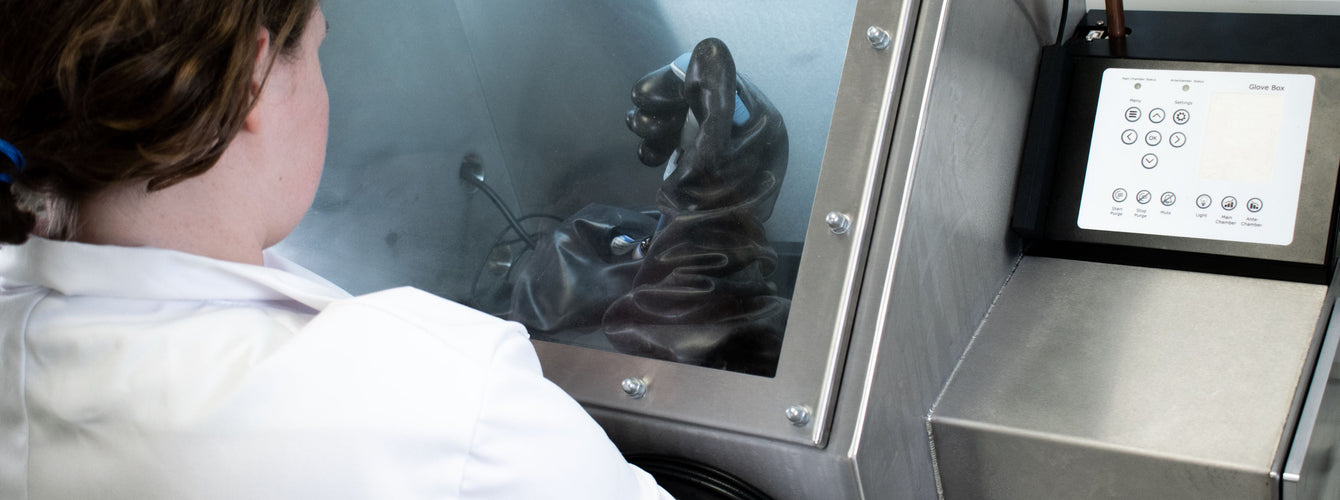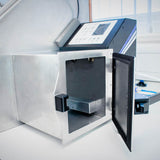Inert Atmosphere Processing
Our glove box is a complete benchtop system designed with affordability and simplicity in mind. Ideal for many inert atmosphere applications, from air sensitive experiments to handling hazardous materials and chemicals. With a comprehensive and versatile suite of integrated features, our glove box is built for every laboratory, including yours.
We also supply a range of replacement components, including gloves and sensors, to make system maintenance straightforward and easy. And if you need support, our resources provide troubleshooting tips, application guidance, and maintenance advice.
Together, we offer everything you need to easily incorporate an effective Ossila Glove Box system into your laboratory set up.
Jump to: Browse equipment | Inert atmosphere applications | What is a glove box? | Resources and support
Browse Inert Atmosphere Processing Equipment
Inert Atmosphere Applications

Working with Oxygen/Moisture-Sensitive Materials
Many chemicals, samples, and experiments require an oxygen-free or low-humidity environment to avoid degradation. Inert atmosphere processing systems allow you to handle these materials without exposing them to air.
Hazardous Substance Isolation
Some inert atmosphere systems provide a physical barrier to contain or isolate dangerous gases, powders, or other hazardous materials that could be harmful if released into the lab. This protects both the researcher and the surrounding environment. These are know as isolation systems.
Contamination Prevention
An inert, isolated atmosphere can also protect sensitive samples or experiments from outside contaminants like dust or moisture. This is crucial for things like semiconductor fabrication, protein crystallization, and other precision applications. Equipment for these purposes are known as contamination sytstems.
What is a Glove Box?
A glove box creates a stable, sealed environment. Samples are transferred into the main chamber through an antechamber, and gloves enable you work within the inert environment.
Within a glove box, you can handle sensitive or reactive materials without exposing them to the open air. This makes them an essential piece of equipment used in many areas scientific research.

Some important features of a glove box include:
-
The box is sealed as much as possible to isolate samples from the outside atmosphere. The glove box is usually filled with an inert gas that will not react with other materials.
-
The researcher interacts with the contents of the box using gloves built into the walls of the glove box.
-
Materials and equipment can be moved into or out of the glove box using an antechamber.
Glove boxes come in a variety of sizes, from small benchtop units (like the Ossila Glove Box) to large units with complex filtration systems. They are typically made of robust metals, like steel, with a transparent window so the researcher can see what they are working with. This window is often made from acrylic or tempered glass. The gloves are usually made of materials like butyl rubber that provide dexterity, with as little leaking as possible.




















